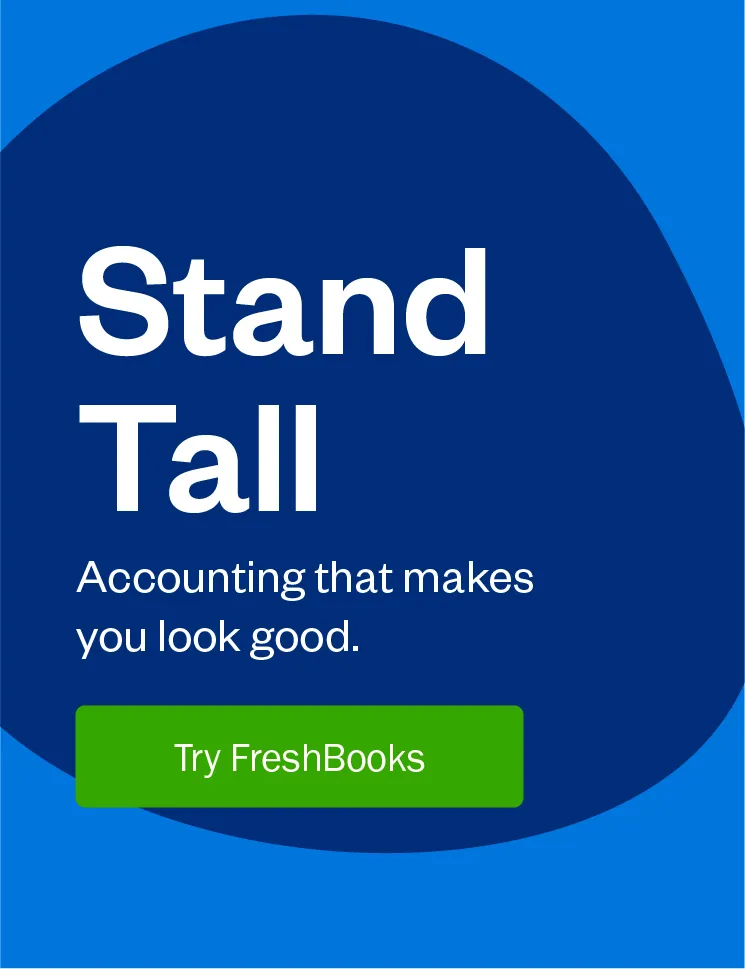Are you a Canadian sole proprietor who receives payment from U.S. companies? Then you need to know about Form W-8BEN.

Whether you’re a graphic designer, IT specialist, writer, or any other type of service provider, it’s not uncommon to have American clients. After all, with a population nearly 10 times the size of Canada’s, the U.S. is home to businesses of all kinds, and the opportunities for Canadian professionals are endless. Not to mention favorable exchange rates potentially boosting your earnings.
However, while you’re busy delivering your services, you also need to be aware of tax obligations, especially in relation to U.S. tax withholding. As a first step, this means filling out a W-8BEN for your client before you get paid.
So, what exactly is a W-8BEN form? Here’s a quick breakdown:
- Form W-8BEN is used to certify your foreign status as a Canadian resident for U.S. tax purposes.
- It allows you to claim the tax treaty benefits that can reduce or eliminate the withholding tax the U.S. government might otherwise impose on your income.
- The form also helps establish your beneficial owner status, meaning you are the rightful recipient of the income earned from your U.S. clients.
In the coming sections, we’ll guide you through the steps to fill out Form W-8BEN correctly, explain the IRS instructions, and give you the information you need to stay compliant and maximize your tax benefits.
Table of Contents
How Does U.S. Tax Law Affect Canadian Sole Proprietors?
In general, U.S. companies are required to withhold 30% in taxes on any payments they make to foreign contractors. This means your American clients (also known as the withholding agent) are responsible for deducting the appropriate tax from your income before sending it to you. They then pay this withheld amount directly to the Internal Revenue Service (IRS).
Now, if your U.S. client fails to withhold the tax properly, they could be held responsible for the amount that should have been deducted.
For Canadian sole proprietors, this can result in double taxation on the same income: once by the U.S. and again by Canada.
But don’t panic—there’s good news for you!
Does Canada Have a Tax Treaty with the U.S.?
The short answer? Yes.
Canada and the U.S. have a long history of economic ties, with many businesses and individuals crossing the border for work, investment, and trade. To avoid the burden of double taxation on income earned in the other country, the two nations signed the Canada-U.S. income tax treaty.
Here’s the key point for Canadian sole proprietors working with U.S. clients:
- The tax treaty between Canada and the U.S. ensures that you won’t be taxed twice on the same income in the same year.
- Article VII of the tax treaty states that Canadian residents (like you) are only taxed by the U.S. on business profits to the extent that those profits are connected to a permanent establishment in the U.S. (like an office, branch, or other business location).
- If you don’t have a permanent establishment in the U.S., income from U.S. clients is generally not taxable in the U.S., as long as you report it and pay income tax to Canada.
All you need to do to claim tax benefits and exemptions from U.S. tax withholding is to fill out Form W-8BEN. This form certifies your foreign status as a Canadian resident.
What Is a W-8BEN Form?
Form W-8BEN, is an important IRS tax form that confirms your foreign status and helps you claim tax benefits under the Canada-U.S. income tax treaty. By completing and submitting Form W-8BEN, you’re telling your U.S. client that:
- You are not a U.S. resident.
- You are the beneficial owner of the income you’re earning.
- You are claiming a reduced withholding tax rate or exemption from U.S. tax, thanks to the income tax treaty between Canada and the U.S.
For Canadian sole proprietors and independent contractors, this form can help you avoid the standard 30% withholding tax that U.S. companies typically apply to foreign payments. Instead, you may qualify for a 0% withholding tax rate on your income, meaning your payments won’t be taxed at source in the U.S. (and you’ll pay taxes on this income in Canada instead).
Here’s how it works: You fill out form W-8BEN and give it directly to your U.S. client. They’ll file it with their corporate taxes, which helps ensure they apply the reduced withholding tax rate on your payments.
By completing the form, you’re essentially confirming that you are the beneficial owner of the income, and therefore entitled to the tax benefits under the Canada-U.S. income tax treaty.
Who Needs to Fill Out a W-8BEN Form in Canada?
If you’re a Canadian sole proprietor or freelancer receiving payments from U.S. clients, you’ll need to submit Form W-8BEN to your client. The form helps your client determine the correct tax withholding based on your foreign status.
Your U.S. client (also known as the withholding agent) is required to verify your status as a foreign person under U.S. tax law in order to determine how much tax to withhold from your payments.
Whether you’re working with financial institutions, foreign entities, or even tax-exempt organizations, it’s important to complete Form W-8BEN to ensure you’re not paying more taxes than necessary.
What’s Considered Income on a W-8BEN Form?
For U.S. tax purposes, it’s not just payments for your services that are considered income. Also included are:
- interest and dividends
- royalties, premiums, and annuities
- rent and other fixed income
- compensation for services rendered
How Often Do You Need to Fill Out Form W-8BEN?
Once you’ve filled out and submitted your W-8BEN form, it typically remains valid for 3 years, unless there are significant changes to your tax status. Here’s how it works:
- Your form will be valid until the last day of the third calendar year after you sign it. For instance, if you submit the form on December 1, 2024, it will remain in effect until December 31, 2027.
- If there are any changes in your circumstances (like a change in your tax residency or income sources), you may need to submit an updated form sooner.
What If You Don’t Fill Out Form W-8BEN?
If you decide not to complete the W-8BEN form, your U.S. client is legally obligated to withhold 30% of your payments to cover U.S. tax withholding. This backup withholding rate applies to income such as royalties, rent, dividends, and compensation.
Failing to submit the form means your payments may be taxed at a much higher rate than you would owe under the tax treaty between Canada and the U.S. So, it’s in your best interest to complete the form accurately and submit it promptly.
What Happens If a U.S. Client Withholds Tax in Error?
If your U.S. client withholds 30% of your payment erroneously, you can file a U.S. tax return Form 1040-NR along with Form 8833 to disclose your position under the U.S.-Canada Treaty.
You can attempt to prepare the 1040-NR by carefully following the instructions, but you may prefer to find a tax accountant who is experienced with non-resident tax returns.
When Do You Need to Fill Out a W-8BEN Form?
If your U.S. client mistakenly withholds too much tax—like the 30% rate instead of the reduced withholding tax rate that you’re entitled to under the income tax treaty—you can correct the error by filing a U.S. tax return.
Here’s what to do:
- File Form 1040-NR: Nonresident aliens (foreign individuals) use this form to report U.S. income and taxes paid.
- Submit Form 8833: This form helps you claim a tax treaty benefit and explain why you qualify for a reduced rate.
- Consider working with a tax professional who has experience with nonresident tax returns to help ensure your forms are completed correctly and you get a refund for any excess withholding.
When Do I Need to Fill Out a W-8BEN Form?
Form W-8BEN is for individuals and sole proprietors. If you’re part of a corporation or another type of business entity, you’ll need to use Form W-8BEN-E instead.
Form W-8BEN-E is more complex and is required for entities like corporations, partnerships, and other foreign businesses. This form includes extra information, such as your foreign tax identification number (TIN), and complies with FATCA (Foreign Account Tax Compliance Act).
How to Fill Out Form W-8BEN in Canada
Filling out Form W-8BEN is fairly simple. Here’s what to expect:
Part I: Personal Information
- Line 1: Name of individual who is the beneficial owner
- Line 2: Country of citizenship
- Line 3: Permanent residence address
- Line 4: Mailing address (if different from above)
- Line 5: U.S. taxpayer identification number, i.e., Social Security Number (SSN) or Individual Taxpayer Identification Number (ITIN)
Note: If you’re not eligible for an SSN, you can apply for an ITIN by filing Form W-7 with the IRS. It usually takes four to six weeks to get an ITIN. However, if you have a Social Insurance Number (SIN), you can skip this line and enter your SIN on Line 6 - Line 6: Foreign tax identifying number (i.e., Canadian SIN)
- Line 7: Reference number (leave blank in most cases)
- Line 8: Date of birth
Part II: Claim Tax Benefits
- Line 9: Input your residence country (Canada)
Note: Under the tax treaty between Canada and the U.S., Canadian taxpayers pay a 0% rate of withholding tax under Article VII - Line 10: Special rates and conditions (typically not applicable for sole proprietors)
Part III: Certification
- Certification that the information you enter is true, correct, and complete
Once completed, submit your W-8BEN form to the withholding agent (your U.S. client). You don’t need to mail it to the IRS. Generally, your W-8BEN will remain in effect for 3 years, unless a change in circumstances makes any information on the form incorrect.
9 Important Takeaways About Form W-8BEN
When you complete Form W-8BEN, you’re not just filling out a form for the sake of it—you’re confirming important tax details to the Internal Revenue Service (IRS). Essentially, you’re telling the IRS that you:
- are not a U.S. resident and do not reside or work in the U.S
- are the beneficiary of the income you are earning
- will report your income to the Canada Revenue Agency (CRA), in accordance with Canadian tax law
By submitting this form, you’re ensuring that you won’t be subjected to unnecessary U.S. tax withholding. So whether you choose to complete Form W-8BEN yourself or enlist the help of a tax advisor, the key takeaway is: Don’t delay or ignore it!
Here are some helpful things to remember when dealing with Form W-8BEN:
1. Accurate Completion is Crucial
Claiming tax benefits under the Canada-U.S. tax treaty requires precise information. Make sure the form is filled out correctly so you can take advantage of the reduced withholding tax rate (often 0%) on your income. Inaccuracies or incomplete details can delay processing, and your U.S. client may withhold more tax than necessary.
2. Include Your Foreign Tax Identification Number (TIN)
The foreign tax identification number is necessary for completing Form W-8BEN. If you don’t have a U.S. taxpayer identification number (TIN), you can use your Social Insurance Number (SIN) in most cases. However, if you’re engaging in certain types of income like investment-related earnings, you might need a U.S. TIN.
3. File the Form With Your Withholding Agent
Remember that Form W-8BEN is not filed with the IRS directly by you. Instead, you submit it to your U.S. client, who acts as the withholding agent. The withholding agent uses the form to determine the amount of tax withholding required on payments made to you. You do not need to send the form to the IRS unless there’s an error with tax withholding.
4. You May Need to Update Your W-8BEN
If your circumstances change (e.g., a change in tax residency or income source), you must submit a new Form W-8BEN. Otherwise, it’s typically valid for 3 years. Keep in mind that any changes to your foreign status could affect the withholding tax rate your U.S. client applies to your payments.
5. If Your Client Withholds Tax Incorrectly, You Can Take Action
If your U.S. client accidentally withholds too much tax (for example, applying the full 30% withholding tax rate instead of the reduced rate from the tax treaty), you can take steps to fix the situation. This involves filing a U.S. tax return (Form 1040-NR) to claim a refund for the overpaid tax. It’s essential to work with a tax professional familiar with U.S. tax laws and nonresident alien tax returns to ensure everything is handled correctly.
6. W-8BEN vs. W-8BEN-E
For sole proprietors and individuals, you’ll use Form W-8BEN, but if you’re representing a business or foreign entity, you will need to fill out the more detailed Form W-8BEN-E. The W-8BEN-E is much more complex, as it gathers additional information related to foreign businesses, financial institutions, and entities seeking tax treaty benefits. So, make sure you’re using the right form for your specific situation.
7. Understand Backup Withholding
If you fail to submit Form W-8BEN, your U.S. client will apply the backup withholding rate set by the Internal Revenue Code (IRC), which is typically 30% of any payments they make to you. This includes compensation, royalties, and other income. To avoid this, it’s important to get your form submitted on time and in full.
8. Don’t Forget Your Canadian Tax Obligations
While Form W-8BEN helps you avoid excessive U.S. tax withholding, it doesn’t exempt you from Canadian income tax. You’ll still need to report your income from U.S. clients on your Canadian tax return and pay applicable taxes to the Canada Revenue Agency (CRA). However, the tax treaty ensures you don’t face double taxation, and the tax you’ve paid in the U.S. (if applicable) may be credited back to you against your Canadian tax liability.
9. Seek Professional Tax Advice if Necessary
If you’re ever unsure about completing Form W-8BEN, or if your situation is a bit more complex (e.g., you’re dealing with royalties, premiums, annuities, or business entities), consider seeking advice from a tax professional who understands both U.S. tax laws and Canadian tax laws. The form may seem straightforward, but there are nuances that can impact your tax status and overall tax benefits.
When and Why to Use Form W-8BEN-E
If you’re representing a foreign organization, foreign financial institution, or a foreign business entity, you’ll need to use Form W-8BEN-E, which is the equivalent of Form W-8BEN for business entities. It’s crucial to understand the difference:
- Form W-8BEN-E is typically used by non-financial foreign entities or businesses that need to claim reduced withholding tax rates under the income tax treaty.
- Foreign flow-through entities like partnerships or S-corporations should also use Form W-8BEN-E to properly claim their tax treaty benefits.
- The form is more detailed, requiring information about the status of the benefit owner, the entity’s tax identification number, and whether the organization is a tax-exempt organization under U.S. tax law.
Importance of Filing Form W-8BEN-E for Tax Exemptions
If you are operating as a foreign organization or foreign business, it’s essential to ensure that your tax status is reflected accurately to benefit from tax exemptions or reduced tax rates:
- Tax-exempt organizations: Certain organizations, like international organizations or nonprofit entities, can apply for tax-exempt status. By filing the appropriate forms (such as Form W-8BEN-E), these organizations can avoid withholding tax on their income from U.S. sources.
- Foreign branch operations: If you run a foreign branch in the U.S. or have a foreign intermediary managing your U.S.-based income, report the correct tax identification number and business details.
How U.S. Tax Withholding Affects Your Payments as a Canadian Contractor
As a Canadian sole proprietor or independent contractor, if you’re working with U.S. clients, it’s essential to understand how United States tax withholding works. When you earn income from U.S. sources, your American clients are required by law to withhold a certain percentage of your payments as taxes. This withholding is mandated by the Internal Revenue Service (IRS) and is generally set at 30% unless you qualify for a reduced rate under a tax treaty.
File Form W-8BEN to Maximize Your Tax Benefits
Form W-8BEN helps ensure that you can claim the tax treaty benefits and avoid unnecessary tax withholding. By completing this form correctly and submitting it to your withholding agent, you can save money, streamline your tax process, and avoid potential complications. Keep your information up to date, report your income properly, and always seek professional tax advice if you’re unsure.
By following these steps, you’ll be on your way to maximizing your tax benefits and minimizing your tax withholding—whether it’s royalties, compensation, or any other income type.
This post was updated in January 2025.

Written by Heather Hudson, Freelance Contributor
Posted on August 22, 2022
This article was verified by Kristen Slavin, CPA


 Canada Tax: Your Guide to Form T2125
Canada Tax: Your Guide to Form T2125 How to Reduce Your Self-Employed Tax in Canada
How to Reduce Your Self-Employed Tax in Canada Small Business Incorporation in Canada: Is It for You?
Small Business Incorporation in Canada: Is It for You?






